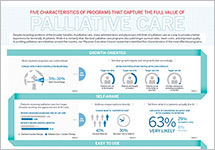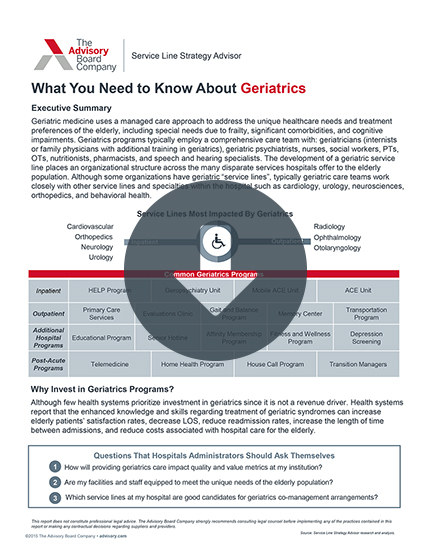Auto logout in seconds.
Continue LogoutNew research shows one in three patients over 65 die in the hospital after they are placed on ventilators—a finding that is prompting physicians to reconsider their treatment approach for older patients, Paula Span writes for the New York Times.
Download URMC's question prompt list to start improving end-of-life care for patients
Doctors typically place patients on ventilators if they cannot breathe on their own. The treatment, also known as mechanical ventilation, requires patients to be intubated—an invasive procedure in which a plastic tube is inserted down the patient's throat and attached to a ventilator that breathes for the patient.
Intubated patients are admitted to intensive care, Span writes. They cannot speak and commonly are either unconscious or sedated. "If they were conscious, patients might try to pull out the tubes or the I.V.'s delivering nutrition and medications," Span writes.
Intubation success rates decline with age
While intubation is often lifesaving, new research suggests that among older patients its benefits may not outweigh its downsides, and the procedure may reduce patients' quality of life. "[Older patients] sometimes have values and preferences beyond just prolonging their lives," Kei Ouchi, an emergency physician and researcher at Brigham and Women's Hospital, said.
Ouchi led a study recent published in the Journal of the American Geriatrics Society that examined data on 35,000 adults ages 65 and older who were intubated at one of 262 hospitals between 2008 and 2015. Overall, the study found 33% of the patients died in the hospital, while just 25% of intubated patients survived and went home.
Span writes that the findings suggest age may play a factor in intubation outcomes. The researchers found 31% of intubated patients ages 65 to 74 survived their hospitalizations and returned home, compared with 19% of patients ages 80 to 84 and 14% of patients over 90. They also found the mortality rate sharply increased from 29% for the youngest cohort of patients to 50% for the oldest cohort of patients.
An alternative treatment?
While Span writes that intubation rates are expected to increase, in some cases physicians are turning to a noninvasive alternative, such as a bi-level positive airway pressure (bipap) device, which uses a tightfitting mask placed over a patient's nose and mouth to help them breathe. According to Span, a bipap device works nearly as well as intubation, and it allows patients to remain conscious and briefly remove the mask to drink water or hold short conversations.
Researchers at Mayo Clinic reviewed 27 studies on the bipap device, focusing on studies involving patients with do-not-intubate or comfort-care-only orders. They found most patients treated with the noninvasive alternative had similar or better mechanical ventilation than those who used intubation, and were equally likely to survive to discharge.
Douglas White, one of the study's authors and a critical care physician and ethicist at the University of Pittsburgh School of Medicine, said, "There are cases where noninvasive ventilation is comparable or even superior to mechanical ventilation."
Physicians look for other options
According to Span, bipap devices could also be used in the ED, where physicians often need to make quick medical decisions to save a patient's life. For instance, Span writes, "[B]ipap may provide an interim option, giving families and physicians time to decide together whether to intubate an ailing older patient, who at this point probably can't direct his own care."
Michael Wilson, a critical care physician at the Mayo Clinic, in a JAMA perspective explained how he approaches these conversations with patients and families. Wilson said before he intubates a patient, he tells patients and their families that they intend to do everything they can for the patient, but that an intubated patient might nonetheless die. Wilson said he tells his patients before intubation, "You may later wake up and do fine or this may be the last time to communicate with your family," because intubated patients are unable to speak.
Wilson said he encourages families to share any words of affection, comfort, or reassurance before the patient is intubated, letting them talk as the intubation is set up. Wilson said, "It's nearly always, 'I love you. I hope you do well'" (Span, New York Times, 6/22).
Next, get URMC's end-of-life conversation prompts
When it comes to end-of-life care, most organizations struggle to meet patients' needs. In a recent poll, 87% of Americans age 65 and older said that they believe their doctor should discuss end-of-life issues with their patients; however, only 27% of those polled had actually discussed these issues with their doctor.
Download URMC's conversation prompts to start improving end-of-life care for patients.
Don't miss out on the latest Advisory Board insights
Create your free account to access 1 resource, including the latest research and webinars.
Want access without creating an account?
You have 1 free members-only resource remaining this month.
1 free members-only resources remaining
1 free members-only resources remaining
You've reached your limit of free insights
Become a member to access all of Advisory Board's resources, events, and experts
Never miss out on the latest innovative health care content tailored to you.
Benefits include:
You've reached your limit of free insights
Become a member to access all of Advisory Board's resources, events, and experts
Never miss out on the latest innovative health care content tailored to you.
Benefits include:
This content is available through your Curated Research partnership with Advisory Board. Click on ‘view this resource’ to read the full piece
Email ask@advisory.com to learn more
Click on ‘Become a Member’ to learn about the benefits of a Full-Access partnership with Advisory Board
Never miss out on the latest innovative health care content tailored to you.
Benefits Include:
This is for members only. Learn more.
Click on ‘Become a Member’ to learn about the benefits of a Full-Access partnership with Advisory Board
Never miss out on the latest innovative health care content tailored to you.


